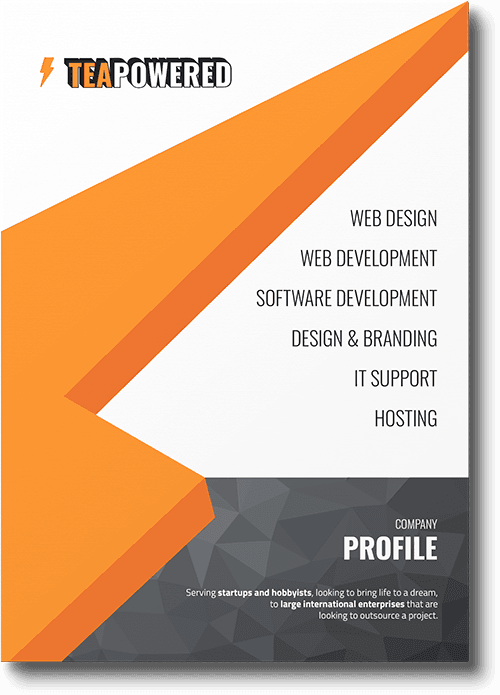1. Introduction
If you're running a micro business—say 1 to 15 staff and turning over £100k or more—you’ve probably heard that you’re “too small” to worry about IT support. But here's the truth: even the smallest businesses today rely heavily on digital tools, and a poor IT setup can slow you down, cause costly downtime, and leave you vulnerable to cyberattacks.
Many micro business owners either ignore IT until something breaks, or rely on a part-time tech-savvy employee to keep things afloat. That might work—for a while. But once you hit a handful of staff or start working remotely, you need more than just a patchwork of quick fixes. You need a simple, secure, and scalable IT setup that protects your data, supports your growth, and just works—without stealing your time.
This guide walks you through the ideal IT setup for micro businesses. It’s based on years of experience helping teams like yours get the basics right from day one—without overspending or overengineering.
2. The Foundations of a Simple, Secure IT Setup
The best IT setups for micro businesses don’t start with big budgets or flashy tech—they start with the right mindset: “secure by default, scalable by design.”
You don’t need enterprise-grade systems, but you do need structure. Your team might be small, but you still face the same threats and productivity blockers as larger organisations: cyberattacks, lost data, failed backups, forgotten passwords, and remote access issues. The key is to put in place the tools and habits that reduce risk, without adding unnecessary complexity.
What every micro business should have from day one:
A proper firewall (not just your ISP’s router)
Basic backup and recovery plans
Secure devices with encryption and non-admin accounts
Microsoft 365 (or equivalent) with enforced MFA
A central place to store and manage passwords
A reliable VPN for remote access
A way to track issues—before they become real problems
You can absolutely start by managing this in-house. But once your business hits around 5 users or devices, or your first remote hire, the cracks start to show. At that point, it becomes cheaper—and safer—to consider managed IT support.
3. Core Components of a Secure IT Infrastructure
a. Network & Firewall
Most small businesses plug in the router supplied by their internet provider and call it a day. But if you're serious about security, that just won’t cut it.
Consumer-grade routers are designed for convenience, not control. They typically:
Have poor firewall rules by default
Don’t log access or alerts effectively
Can’t segment your network (e.g. separating staff devices from smart printers or guests)
Offer little in the way of remote management
Unifi offers a reliable, scalable solution that strikes the right balance for micro businesses:
Built-in firewall with granular control
Simple VPN setup for remote workers
Centralised management portal for all network devices
Affordable hardware that grows with your team
b. Workstation Security
Even with a secure network, the biggest risk often comes from the devices your team use every day.
Non-Admin User Accounts: Prevent unauthorised system changes.
BitLocker Encryption: Encrypts drives, protects data if a device is lost or stolen.
Intune (Optional): Registering devices with Microsoft Intune gives you central control, security policy enforcement, and the ability to remotely lock or wipe devices.
c. Email & Productivity Suite
We recommend Microsoft 365 Premium as the best-fit solution for most small teams. It’s secure, scalable, and widely supported.
Advanced security features (Defender, conditional access)
Enforced MFA
Endpoint protection
Built-in device and mobile management
Use OneDrive and SharePoint:
Avoids local-only file storage
Enables rollback and file version history
Seamless collaboration across locations
d. Backup & Business Continuity
No matter how small your business is, data loss can be devastating.
On-site NAS or server for fast local restores
OneDrive/SharePoint for active file sync
3rd-party backup software to back up Microsoft 365 data externally
This triple-layer approach gives you resilience without complexity.
e. Password Management & Access Control
Even in small teams, password hygiene is critical.
Use Keeper for secure, shareable, and manageable password storage
Enforce MFA across all tools (Microsoft 365, Keeper, cloud software, etc.)
Apply role-based access to limit exposure
f. Remote Work & VPN Access
Remote and hybrid work require secure access solutions.
Simple setup
Secure, encrypted remote access to office network
Ideal for accessing file shares, printers, or internal systems
Combine this with a clear remote work policy and you’re covered.
4. When You Should Consider Managed IT
Managing your own IT might work early on, but here’s when it starts to fall apart:
More than 4 or 5 employees
Regular remote access or hybrid setups
Spending more than 8–10 hours/month on IT issues
No process for handling support or hardware failures
Costs:
£100/user/month for all-you-can-eat support (business hours)
£200–£300/user/month for 24/7 or out-of-hours coverage
Downtime, distraction, and lost productivity cost far more in the long run.
5. Common Objections—Answered
“We’re too small to be a target.”
Cyberattacks are automated. If your system is vulnerable, you’re a target.
“We can’t afford it.”
The cost of recovery from a breach, or even a day of downtime, can exceed months of managed IT support.
“Someone on our team handles IT.”
That’s fine until they leave, go on holiday, or run into something outside their skillset. IT needs consistency and oversight.
6. Conclusion
You don’t need enterprise IT—but you do need smart IT. A simple, secure setup helps your micro business stay safe, productive, and focused on growth.
✅ Summary Checklist:
Unifi firewall with VPN
BitLocker + non-admin devices
Microsoft 365 Premium with MFA
On-site NAS + 3rd-party cloud backup
Keeper password manager
Remote work policy + VPN access
📞 Ready to simplify your IT?
Let’s talk. Book a free discovery call and we’ll help you map out the right setup for your business.
